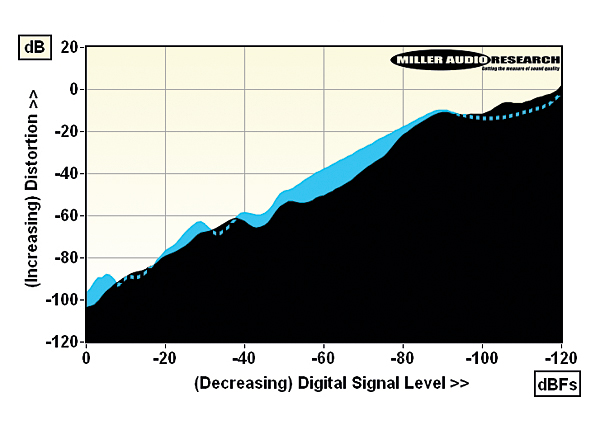Philips CD 207 CD Player Lab Report
While Philips' very early players used the 14-bit TDA1540 DAC, including the CD100 [HFN Oct '11], CD104 [HFN Apr '14] and CD303 [HFN Nov '13], it was the 'classic' partnership of the SAA7310 decoder, the SAA7220 4x oversampling filter and TDA1541 16-bit DAC that was to define the performance and sound of generations of Philips and Marantz players, in addition to a host of third-party machines. Philips' CD450 [HFN Aug '14] was an early adopter of this 16-bit/4x chipset while the compact CD 207, with its CDM2 mechanism arrived a year later in 1987. The SAA7220 digital filter – a limited-tap linear phase type – offers a modest 40dB rejection of stopband images but a much improved response flatness over those earlier 14-bit players – ripple is ±0.03dB here, down from ±0.25dB [see Graph 2].
The +0.1dB/20kHz treble 'lift' is a function of the CD 207's analogue stage, as is the 2.05V maximum output and moderate 193ohm source impedance. The 105dB A-wtd S/N ratio indicates the 17-bit+ potential of this '16-bit' chipset although the drift in low-level linearity below –80dBFs (–5dB offset at –90dBFs), means this is not achieved in practice. The later 'A' and 'Crown' grade DACs, and dual-DAC implementations, would greatly improve upon this result. Jitter suppression is on a par with the CD450 at 450psec, the sidebands all being data-induced in nature. Otherwise, the erratic trends of distortion versus digital level [see Graph 1, below] clearly illustrate that the SAA7220/TDA1541 chipset lacks the uniformity of modern DAC solutions even though the peak-level 0.0007-0.00014% distortion (20Hz-20kHz) is impressively low. The similarity in trend at 1kHz and 20kHz is important from a subjective standpoint, however. PM


| Maximum output level / Impedance | 2.05Vrms / 193ohm |
| A-wtd S/N ratio | 105.1dB |
| Distortion (1kHz, 0dBFs/–30dBFs) | 0.0007% / 0.035% |
| Distortion & Noise (20kHz, 0dBFs/–30dBFs) | 0.0014% / 0.080% |
| Frequency response (20Hz-20kHz) | –0.01dB to +0.12dB |
| Digital jitter | 450psec |
| Resolution @ –90dB/–100dB | –5.2dB / –4.7dB |
| Power consumption | 11W |


















































